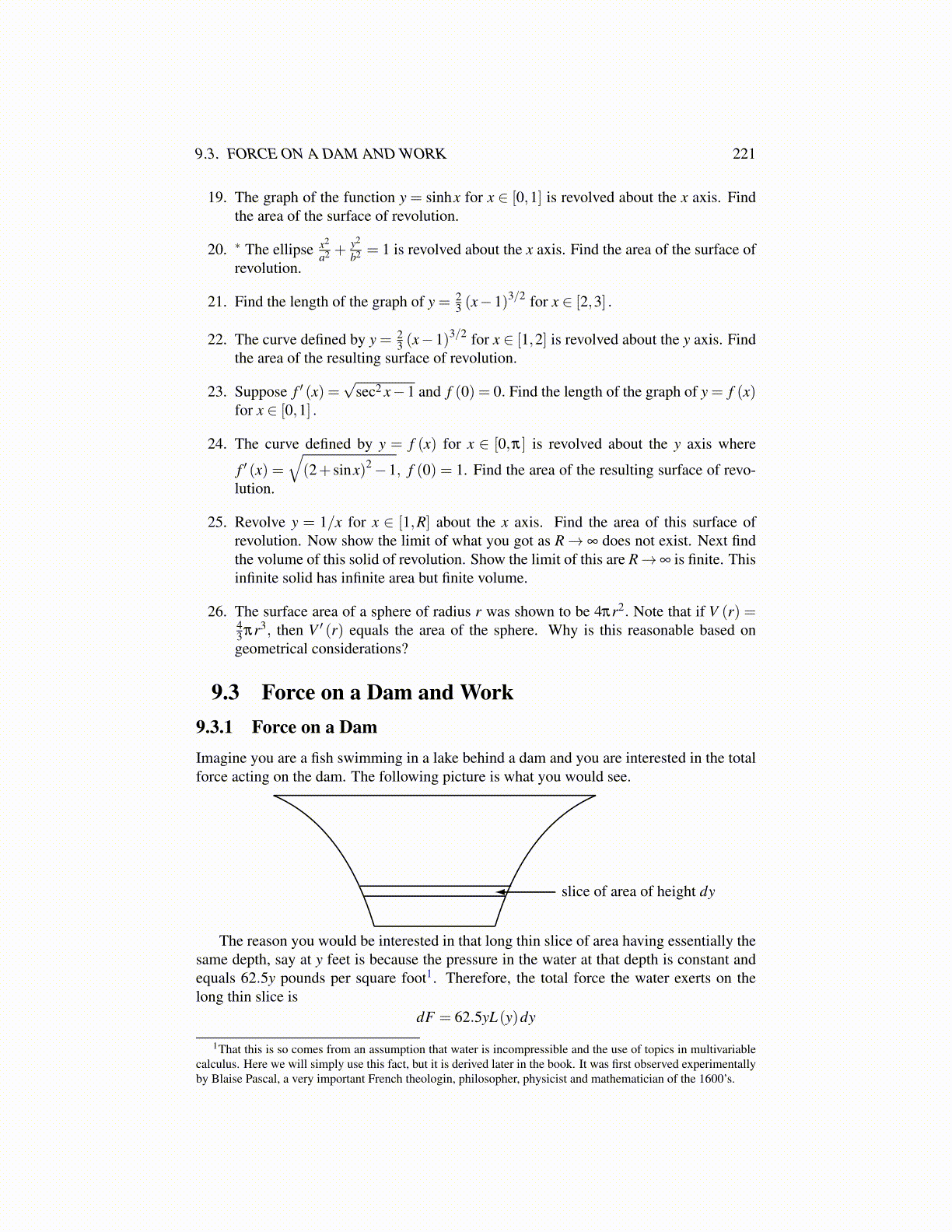
9.3. FORCE ON A DAM AND WORK 221
19. The graph of the function y = sinhx for x ∈ [0,1] is revolved about the x axis. Findthe area of the surface of revolution.
20. ∗ The ellipse x2
a2 +y2
b2 = 1 is revolved about the x axis. Find the area of the surface ofrevolution.
21. Find the length of the graph of y = 23 (x−1)3/2 for x ∈ [2,3] .
22. The curve defined by y = 23 (x−1)3/2 for x ∈ [1,2] is revolved about the y axis. Find
the area of the resulting surface of revolution.
23. Suppose f ′ (x) =√
sec2 x−1 and f (0) = 0. Find the length of the graph of y = f (x)for x ∈ [0,1] .
24. The curve defined by y = f (x) for x ∈ [0,π] is revolved about the y axis where
f ′ (x) =√
(2+ sinx)2 −1, f (0) = 1. Find the area of the resulting surface of revo-lution.
25. Revolve y = 1/x for x ∈ [1,R] about the x axis. Find the area of this surface ofrevolution. Now show the limit of what you got as R → ∞ does not exist. Next findthe volume of this solid of revolution. Show the limit of this are R → ∞ is finite. Thisinfinite solid has infinite area but finite volume.
26. The surface area of a sphere of radius r was shown to be 4πr2. Note that if V (r) =43 πr3, then V ′ (r) equals the area of the sphere. Why is this reasonable based ongeometrical considerations?
9.3 Force on a Dam and Work9.3.1 Force on a DamImagine you are a fish swimming in a lake behind a dam and you are interested in the totalforce acting on the dam. The following picture is what you would see.
slice of area of height dy
The reason you would be interested in that long thin slice of area having essentially thesame depth, say at y feet is because the pressure in the water at that depth is constant andequals 62.5y pounds per square foot1. Therefore, the total force the water exerts on thelong thin slice is
dF = 62.5yL(y)dy
1That this is so comes from an assumption that water is incompressible and the use of topics in multivariablecalculus. Here we will simply use this fact, but it is derived later in the book. It was first observed experimentallyby Blaise Pascal, a very important French theologin, philosopher, physicist and mathematician of the 1600’s.